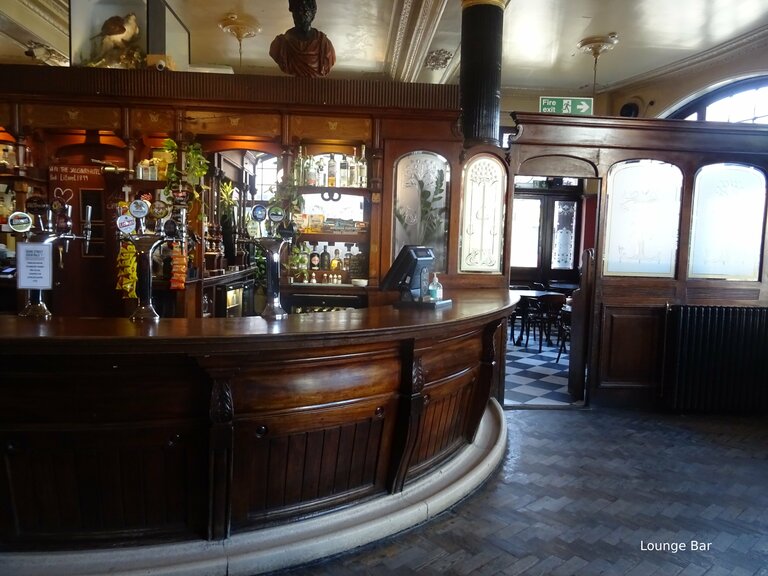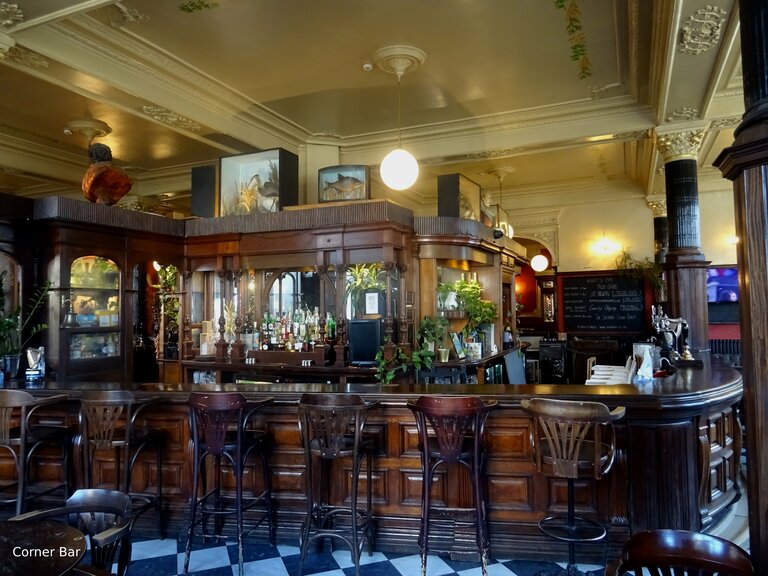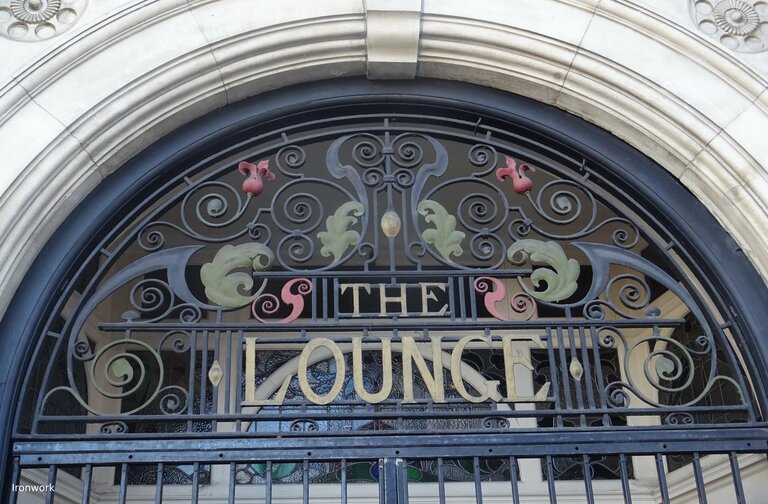Salisbury
The Salisbury1 Grand Parade
Green Lanes
Harringay
N4 1JX
This pub is not only a grade II* listed building, it is also a Three Star pub on the Campaign for Real Ale’s (CAMRA) National Inventory with an interior of outstanding national historic importance, and the description is as follows: "One of the grandest of all pubs built during the great pub boom in the closing years of the 19th century. After years as a run-down pub it was given a careful refurbishment in 2002-3 which has returned it to its former glory. The Salisbury went up in 1898-9, the promoter being John Cathles Hill, a self-made builder and developer who is said to have made the designs himself. He was also responsible for developing large swathes of housing nearby. The Salisbury is a companion piece to Hill’s similarly splendid Queen’s in Crouch End, N8, and the plans of the two pubs are very similar indeed. It is a three-storey (plus attic) pile which totally dominates its corner site. It is built of stone on the ground floor and has contrasted red brick and limestone on the upper floors. Particular features to note are the Larvikite (a flecked, black stone from Norway) columns which carry turrets above and the crown which tops the highest part of the building. The rich ironwork over and the mosaics and tiling in the generous porches give a foretaste of what to expect inside.
On the right, entering through the doorway marked 'Saloon Bar' one comes into the most lavish room consisting of a superb wide corridor with splendid mosaic floor; this space is reminiscent of drinking lobbies so popular in northern pubs (note also the couple of recesses for rather more private drinking). Although it has lost its skylight, the alcoves, plaster, mirrors and woodwork still make it very special indeed. At the rear the former billiard room retains its beautiful skylight decorated with vines that is now used as a restaurant and function room. The remainder of the pub is taken up with two bars surrounding an island servery of epic proportions. Originally there would have been more drinking areas within the large L-shaped bar on the corner with a vast island servery. The counter is a fine one with small, deep panels and wavy pilasters. Behind is a largely original back fitting which bears pretty, delicate Art Nouveau painted details. Elsewhere, the decoration in the surviving etched glass is more typical of such work in late Victorian pubs.
Also look out for a series of unusual mirrors-cum-pictures which are found at several points in the pub. The only really unfortunate change at the Salisbury has been the intrusive creation of the toilet area between the two other rooms. The major and sumptuous addition in 2003 was the black and white marble floor in the corner bar: also the superb mirror (by Cakebread Robey & Co.) by the right-hand entrance which had been stolen, was replaced with a modern copy. The grade II* listing recognises the special importance of this grand and interesting public house."
The listing description is as follows: "Large pub-hotel, 1898-9, by John Cathles Rill. Prominent corner site, curving round into St Ann's Road. French Renaissance style with shaped gables, ogee domed cupolas and large pedimented dormers. 3 storeys and attic, 9 windows and a chimney bay to far left. Red brick with stone bands and dressings. Slated mansard roof has higher central tower with wrought-iron crown. Ground floor of Portland stone with high plinth of grey granite. Polished black granite Corinthian pilasters support fascia. 2 enormous polished granite columns support ha1f-octagonal turrets. Moulded architraves to semi-circular arched openings. Engraved glass to ground floor windows. Entrances have ornate wrought-iron screens above imposts, with elaborately tiled lobbies and mosaic floors. INTERIOR: T op floor: many small bedrooms, each with distinctive fire-surrounds and overmantels of various patterns; kitchen with shelves and large niche for range. Railways: original radiators, black and white tiled floor, panelling, pedimented door surrounds, wrought-iron gas light fittings, tiled former toilet area. Second floor, not inspected. First floor: large room at the front, formerly a restaurant and concert room. Elaborate, compartmented ceiling with ornate fibrous plasterwork, all by the Mural Decoration Company. Engraved glass by Cakebread & Robey, inserted into doors separating off the residential part of the building. Two staircases, one wooden, one with cast-iron balusters. Ground floor, bar area: compartmented ceiling with cast-iron columns, open plan. Curved bar with stone trough at base. Large billiard room with top-lit roof glass painted with creeping vine motif Many elaborate engraved mirrors and fire surrounds. Saloon divided off by arched screen containing glass engraved with Art Nouveau motifs. A magnificently elaborate and complete interior. HISTORICAL NOTE. The Salisbury Hotel was built by Mr John Cathles Hill as one of a pair of pub-hotels in Hornsey. Mr Hill was a successful developer in this part of North London and had his own workshops, where many of the fixtures and fittings for the pubs were made. The glass is notable for the incorporation of Art Nouveau motifs, a short-lived vogue at the turn-of-the-century. SOURCE: 'Victorian Pubs' by Mark Girouard, Yale 1984."
The WhatPub link is here: WhatPub/Salisbury
The Pub Heritage Group link is here: PHG/Salisbury
The Salisbury featured on the Daytime Crawl of Hornsey on 29 September 2001, the Racing, Railways and Prime Ministers: Daytime Crawl of Wood Green, Hornsey, Crouch End, Finsbury Park and Harringay on 20 June 2009, and the Queens, Earls and Tories: Daytime Crawl of Hornsey, Crouch End, Crouch Hill and Harringay on 15 February 2014.







